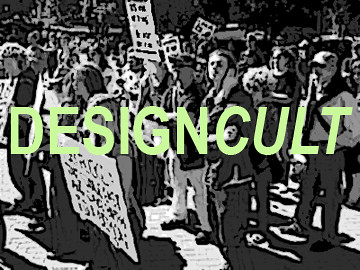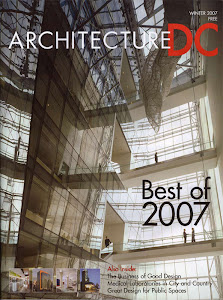On Wednesday, October 3rd, the National Building Museum honored Gehry Partners and Gehry Technologies by presenting them with the Henry C. Turner Prize for Innovation in Construction Technology. According to the NBM website, over 1000 people turned out to hear award recipients Frank O. Gehry and Dennis Shelden discuss their projects, as well as the use of the technologies that they have produced and employed.
Regrettably, much of the event's focus was more on the technical processes and developments that each project has required, more so than an explanation of Gehry’s intellectual process. At times Gehry was even apologetic about his designs, such as his new Lou Ruvo Alzheimer's Institute in Las Vegas, Nevada, of which he said, “It’s really hard to do something in Vegas and get attention for it, so forgive me for this.” (When Gehry first identified the project as a center for Alzheimer’s patience, audience members thought that Gehry was making a joke about the seemingly schizophrenic assemblage. He was not.) While undoubtedly Gehry’s success has been due largely to the highly original and instantly recognizable nature of his work, one must ask how successful a project is if it does not first aim to satisfy the basic needs of the project, and in a pleasing way. This is unfortunately an instance where the form seems to be wagging the function.
Gehry’s work has always left me personally with mixed emotions. In architecture school I learned the importance of designing in such a way that every line drawn, every gesture made, and ultimately every element of a project was done with meaning or purpose; Gehry’s work, by comparison, has always just seemed so spontaneous and cavalier. While his work is monumental, and can redefine and recreate the image of a place, such as is the case of his Guggenheim Bilbao, it has always begged the question of what Gehry's contribution is to the service of architecture. I’ve always regarded his works as sculptures, which are placed, with little exception, without regard for context. His designs, though certainly pushing the limits of creativity and design, do not offer us a language per se which a generation of architects can really employ (such as, in contrast, the language of modern architecture developed through the works of Mies van der Rohe, Le Courbusier, and their contemporaries.) However, as I’ve now begun to acknowledge, Gehry’s contribution is perhaps as significant a paradigm in the world of design: that of the digital interface and the increasing level of freedom allowed through the advancement of design technologies. In that regard, much like his predecessors, Gehry is pushing the limits of design technology, which, along with the construction industry, must adapt and evolve to met the demands of the architecture.
The work of Frank Gehry has in many ways flown in the face of convention (as well as what many of us were repeatedly told in architecture school about the proper organization and hierarchies of masses, the grounding of a building element to the site, the honesty of a building’s exterior form relative to the structure and interior spaces, and the response of a building to its context.) However, through these works, Gehry has established a unique voice in the realm of architecture, and has served to push the limits of architectural design and building technology. (Gehry stated that architects such as Zaha Hadid are now using software developed by Gehry Technologies.)
“Getting these damn things built has been a lot of fun…and a struggle,” quipped Gehry. While the world of architecture may not universally accept the work of Frank Gehry, we are all the benefactors of his struggle.










No comments:
Post a Comment